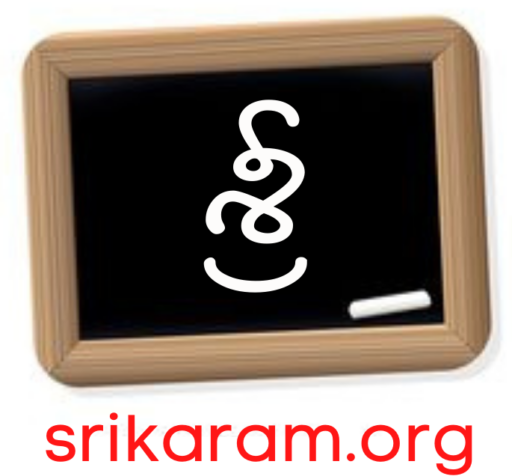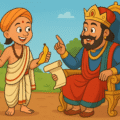Telugu and Tamil are two prominent Dravidian languages spoken primarily in South India. Both languages have rich literary traditions, ancient histories, and millions of speakers. Despite sharing a common Dravidian root, Telugu and Tamil are distinct languages with unique characteristics. This article explores their key differences across various dimensions such as script, phonetics, grammar, vocabulary, cultural context, and historical evolution.
1. Linguistic Family and Origin
- Common Root:
Both Telugu and Tamil belong to the Dravidian language family, one of the oldest language families in the Indian subcontinent. - Historical Development:
- Tamil: One of the oldest living classical languages, Tamil has a recorded literary history going back over 2,000 years, with ancient texts like the Sangam literature (circa 300 BCE – 300 CE).
- Telugu: Telugu’s literary tradition became prominent somewhat later, flourishing from around the 11th century CE. Telugu is often called the “Italian of the East” due to its mellifluous and rhythmic sound.
2. Geographical Distribution and Speakers
- Tamil:
Predominantly spoken in the Indian state of Tamil Nadu and the Union Territory of Puducherry. It is also an official language in Sri Lanka, Singapore, and Malaysia. Tamil has about 75 million native speakers worldwide. - Telugu:
Primarily spoken in the Indian states of Andhra Pradesh and Telangana, Telugu has over 80 million native speakers, making it one of the most widely spoken languages in India.
3. Script and Writing System
- Tamil Script:
- Derived from the ancient Brahmi script through Tamil-Brahmi.
- Contains 12 vowels (uyir) and 18 consonants (mei).
- The script is relatively simple with fewer letters and lacks aspirated consonants and conjunct consonants commonly found in other Indian scripts.
- Tamil script characters are more angular and rounded.
- Telugu Script:
- Derived from the Brahmi script via the Telugu-Kannada script lineage.
- Contains 16 vowels and 36 consonants, including aspirated and retroflex sounds.
- Telugu script is more curvilinear and ornate, often described as “round” or “circular.”
- Uses conjunct consonants extensively.
4. Phonetics and Pronunciation
- Tamil:
- Tamil phonology is simpler; it has fewer phonemes and less variation in consonants.
- Does not distinguish between voiced and voiceless aspirated consonants (e.g., no ‘bh’, ‘dh’ sounds).
- Retroflex consonants and alveolar sounds are prominent.
- Tamil vowels are pure and pronounced clearly without diphthongs.
- Telugu:
- Richer phonetic inventory, including aspirated consonants, nasalized sounds, and a wider range of vowel sounds.
- Telugu pronunciation is more melodic with distinct pitch and intonation patterns.
- It includes the use of both hard and soft consonants, and a clear distinction between voiced and unvoiced sounds.
5. Grammar and Syntax
- Word Order:
Both languages follow Subject-Object-Verb (SOV) order. - Nouns and Cases:
- Tamil has fewer noun cases compared to Telugu. Tamil uses postpositions more than inflections to indicate grammatical relationships.
- Telugu employs more inflectional endings (declensions) for noun cases.
- Verb Conjugation:
- Both languages conjugate verbs based on tense, mood, and person.
- Tamil verbs often use auxiliary verbs to express tenses and aspects.
- Telugu verbs have a complex system with suffixes indicating tense, mood, gender, and honorifics.
- Gender:
Tamil traditionally recognizes two grammatical genders: masculine and feminine/neutral.
Telugu distinguishes masculine, feminine, and neuter genders more explicitly.
6. Vocabulary and Influence
- Tamil:
- Retains a large portion of its original Dravidian vocabulary, with relatively fewer borrowings.
- Sanskrit influence is present but limited compared to Telugu.
- Modern Tamil purists prefer using native words over Sanskrit loanwords.
- Telugu:
- Has incorporated a substantial number of Sanskrit words, especially in formal and literary contexts.
- Influenced by other languages such as Urdu and Persian in some regions.
- Vocabulary tends to be more Sanskritized than Tamil.
7. Literary Traditions
- Tamil Literature:
- Among the world’s oldest continuous literary traditions.
- Notable works include Thirukkural, Silappadikaram, and the Sangam anthologies.
- Rich tradition in poetry, philosophy, and classical music.
- Telugu Literature:
- Flourished under the patronage of Vijayanagara Empire and later rulers.
- Famous poets include Nannaya, Tikkana, and Potana.
- Known for epic poetry and devotional literature.
8. Cultural Context and Usage
- Tamil:
- Often associated with Tamil identity and pride, especially in Tamil Nadu.
- Used extensively in classical music (Carnatic), cinema, and media.
- Telugu:
- Celebrated for its poetic nature, called the “Italian of the East.”
- Telugu cinema (Tollywood) is one of India’s largest film industries.
- Strong presence in classical dance forms like Kuchipudi.
9. Mutual Intelligibility
Despite both being Dravidian languages, Telugu and Tamil are not mutually intelligible. A native Tamil speaker would find Telugu quite different in pronunciation, vocabulary, and grammar, and vice versa.
Summary Table
| Feature | Tamil | Telugu |
|---|---|---|
| Language Family | Dravidian | Dravidian |
| Number of Speakers | ~75 million | ~80 million |
| Primary Regions | Tamil Nadu, Sri Lanka, Singapore | Andhra Pradesh, Telangana |
| Script | Tamil script (simpler, angular) | Telugu script (curvilinear) |
| Phonetics | Fewer consonants, no aspirates | More consonants, aspirates |
| Grammar | Fewer noun cases, simpler verbs | More noun cases, complex verbs |
| Vocabulary | More Dravidian, less Sanskrit | More Sanskrit loanwords |
| Literary History | >2000 years | Flourished from 11th century |
| Mutual Intelligibility | No | No |
Conclusion
Telugu and Tamil are both beautiful, classical languages that have evolved independently for centuries despite sharing a Dravidian heritage. Their unique scripts, phonetics, grammar, and cultural identities make them distinctive languages worthy of appreciation and study. Understanding their differences helps in respecting the diversity and richness of South India’s linguistic landscape.

